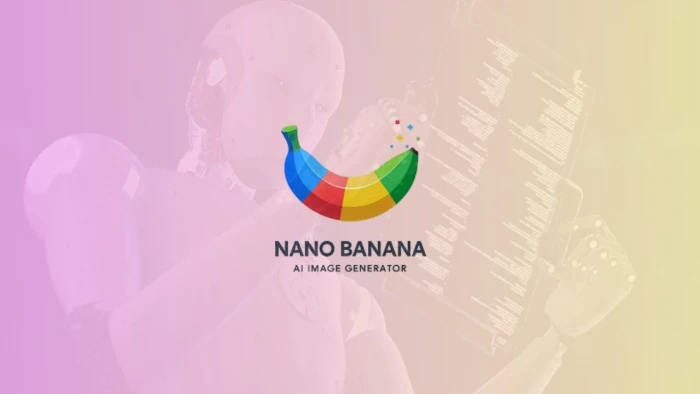

Google’s Nano Banana AI is more than a quirky name—it’s shorthand for Gemini 2.5 Flash Image, the latest step in making AI-driven image editing and generation practical, transparent, and developer-friendly. Unlike traditional AI image tools, Nano Banana AI is natively part of the Gemini ecosystem, and its functionality is documented for developers in the Gemini API and demonstrated in AI Studio.
This isn’t just about quick photo touch-ups—it’s about text-to-image generation, multimodal editing, and seamless integration with apps and workflows.
According to Google’s developer documentation, Gemini 2.5 Flash Image supports:
Each output is watermarked with SynthID, ensuring transparency for AI-generated media..
What sets Nano Banana apart is where it lives:
“Summarize this article, then design a visual thumbnail.”
“Write a product description and generate matching lifestyle images.”
On AI Studio, users can test the same functionality interactively:
This makes Nano Banana AI a bridge between developer APIs and non-technical users, where professionals, creators, and students can try edits without coding.
A developer uploads a basic product photo into Gemini API:
_1756551525.webp)
In seconds, the output is a professional-grade marketing photo—no Photoshop layers, no external subscription.
The result is as below :

One of the biggest advantages of Nano Banana AI (Gemini 2.5 Flash Image) is its ability to understand natural language at depth. Instead of tossing in keywords, you’ll get the best results when you describe scenes narratively—as if you’re briefing a photographer or illustrator.
Here are strategies to craft effective prompts for both image generation and image editing.
1. Photorealistic Scenes
For realism, borrow from photography: mention shot types, lenses, lighting, and mood.
Example:
A photorealistic close-up portrait of an elderly Japanese ceramicist at work, illuminated by soft daylight, captured with a 50mm lens for crisp texture and detail.
2. Stylized Illustrations & Stickers
If you want playful or branded assets, explicitly state the style and request a transparent background.
Example:
A kawaii-style sticker of a happy red panda with pastel colors, bold outlines, and flat shading on a transparent background.
3. Rendering Text in Images
Gemini’s image model excels at text accuracy. Be specific about font style, mood, and placement.
Example:
A minimalist logo for a coffee shop named “The Daily Grind,” using bold sans-serif typography, warm earthy tones, and a modern flat style.
4. Product Mockups & Commercial Shots
For e-commerce or branding, use studio terms—lighting setups, angles, focus points.
Example:
A high-resolution, studio-lit photo of a ceramic mug on a white marble surface, captured with a three-point softbox setup, sharp focus on the handle, 16:9 format.
5. Minimalist & Negative Space Design
Great for marketing backdrops or presentation slides.
Example:
A minimalist composition with a single red maple leaf in the bottom-right corner, soft beige background, plenty of negative space, 16:9 ratio.
6. Sequential Art (Comics/Storyboards)
When storytelling, include character descriptions, settings, dialogue boxes, and lighting moods.
Example:
A single comic panel in a gritty noir style, a detective holding a lantern in a dark alley, text box reads “The city never sleeps.”
1. Adding or Removing Elements
Provide a base image and specify exactly what to add, remove, or change—Gemini will match the lighting and style.
Example:
Using the uploaded cat photo, add a small knitted wizard hat, keeping lighting soft and natural.
2. Inpainting (Semantic Masking)
Target a single element in the image while preserving the rest.
Example:
Change only the blue sofa in this living room photo to a vintage brown leather Chesterfield. Keep all other details the same.
3. Style Transfer
Apply a new artistic style while keeping the composition intact.
Example:
Transform this city street photograph into the style of Van Gogh’s “Starry Night,” with swirling skies and textured brushstrokes.
4. Composite Scenes (Multiple Images)
Combine two or more uploaded images into one scene.
Example:
Merge this floral summer dress with the uploaded full-body model photo to create a professional fashion catalog image.
5. Preserving Critical Details
When working with faces, logos, or branding, explicitly protect details from being altered.
Example:
Place the provided GA logo on the woman’s shirt in this headshot. Ensure her facial features remain unchanged and natural.
Use references wisely → uploading style or reference images gives the model stronger guidance.
On forums like Reddit, reactions are mixed but practical: people like the speed and integration but recognize it won’t fully replace professional editing suites yet. Coverage from outlets such as Mashable and Imagine. Art highlights the same point — this tool is about bringing editing to everyone, not about competing with specialists.
While Nano Banana AI is powerful, there are a few practical constraints to keep in mind:
Nano Banana AI doesn’t try to overwhelm users with flashy features. Instead, it solves a clear need: making image editing practical, fast, and available to everyone. For students, small businesses, educators, and casual users, it may quickly become the default option. For professionals, it’s a time-saver that complements rather than replaces traditional software.
Be the first to post comment!